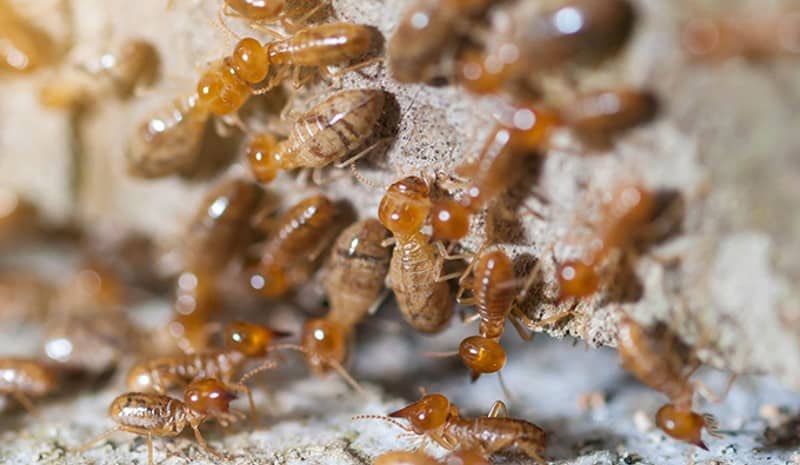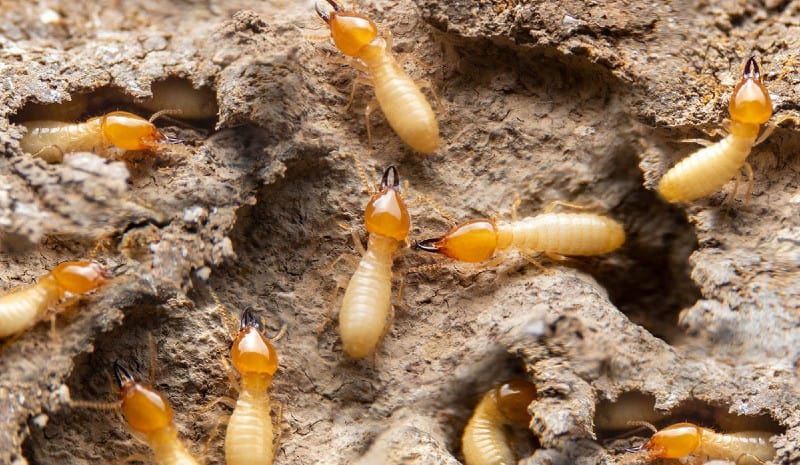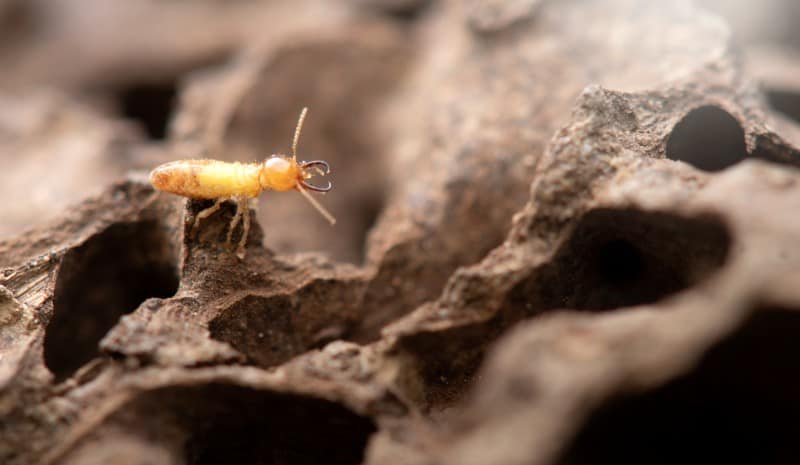Termites are one of the most destructive pests that can infest a home or building. They are tiny and difficult to detect until they have caused significant damage to your property. Investigating termite feeding habits is crucial in order to understand how to prevent and control their presence. Understanding the different types of termites and their feeding habits can help you take appropriate preventive measures to protect your property. In this article, we will explore the feeding behavior of termites, their diets, and the various control methods available to keep your property free from termite infestations. So, let’s dig deeper and explore what you need to know about termite feeding habits.
Feeding Habits of Termites
When it comes to pest infestations, termites have a reputation as one of the most destructive and invasive species around the world. Understanding the feeding habits of termites is crucial, as it can give you insight into how to detect infestations and control them effectively to protect your property. In this section, we’ll explore the fascinating and complex world of termite feeding habits, including their preferred diets and behavior. Keep reading to learn more!
Subterranean Termites Feeding Habits

Subterranean termites are known for their relentless destruction of wooden structures. They have unique feeding habits that must be investigated to understand their behavior and control measures. Here are the key features of their feeding habits:
- Foraging: Subterranean termites forage continuously for sources of cellulose. They build mud tubes that allow them to traverse above ground and find food. Their mud tubes protect them from predators and help to maintain humidity, which they need to survive.
- Prefer Softwood: Subterranean termites prefer to feed on softwood. They will scavenge for cracks in the wood and dig tunnels to create galleries where they can feed. The damage can become extensive if it goes unnoticed.
- Moisture: Subterranean termites are attracted to moisture and will seek out damp areas near wooden structures. They will burrow in the earth to find soil and moisture, using mud tubes to travel between their nest and food sources.
- Size of Colonies: Subterranean termite colonies can range from a few thousand to several million individuals, and the size of the colony will impact their feeding habits. Larger colonies will require more food and may be more destructive, as they forage over a wider area.
To prevent subterranean termites from feeding on your wooden structures, it is important to eliminate sources of moisture and keep the area around your home dry. Regular inspections by a professional exterminator can also help catch infestations early. If you suspect an infestation, it is crucial to act promptly and contact a professional pest control company that specializes in termite control.
Dampwood Termites Feeding Habits
Dampwood termites are one of the three main types of termites that can invade our homes. These termites are larger than drywood termites and subterranean termites, and they typically inhabit damp or decaying wood. Here are some facts you need to know about dampwood termites feeding habits:
1. Dampwood termites prefer wet wood: As their name suggests, dampwood termites thrive on wood that has a high moisture content. They are often found in logs, stumps, and other types of wood that are in contact with moist soil. These termites can also eat through wet or decaying wood in a home.
2. Dampwood termites do not need soil: Unlike subterranean termites, dampwood termites do not need soil to survive. They can establish a colony in a log or a tree trunk and feed on it for years without ever touching the soil. This makes them particularly difficult to detect until the damage is already done.
3. Dampwood termites digest wood with the help of gut protozoa: Dampwood termites rely on protozoa in their gut to help them digest wood. The protozoa break down the cellulose in the wood, allowing the termites to extract the nutrients they need. This symbiotic relationship allows dampwood termites to feed on wood that is considered too wet or too decayed for other termites to digest.
4. Dampwood termites can cause significant damage to a home: If dampwood termites are left unchecked, they can cause significant damage to a home’s wooden structure. They can chew through walls, floors, and even furniture. Signs of dampwood termite infestations include small holes in wood, piles of sawdust, and weakened or damaged wood.
To prevent dampwood termites from feeding on your home, it’s important to keep your wooden structures dry and well-ventilated. Remove any decaying wood or tree stumps near your house, and fix leaky pipes or other sources of moisture. If you suspect that you have a dampwood termite infestation, it’s best to consult with a professional pest control service to determine the best course of action.
Drywood Termites Feeding Habits

Drywood termites are a type of termite that, as their name suggests, live and feed in dry, sound wood. Unlike subterranean termites, the drywood termites don’t require contact with soil moisture to survive. Here are a few feeding habits that characterize drywood termites:
- Target dry wood: Unlike other termites that need moisture to survive and feed on the wood, drywood termites prefer to feed on dry wood that is above the ground, such as dead trees, logs, and wooden structures. They usually nest within the wood themselves, making it difficult to identify their presence.
- Favored wood species: Drywood termites have a preference for feeding on hardwood species such as oak, walnut, and maple. However, they can also survive on softwood species such as pine, spruce, and cedar.
- Feeding patterns: Drywood termites chew along and across the wood grain, excavating large galleries where they live and deposit fecal pellets. These pellets are usually similar in color and size to grains of sand and can be found below infested wood.
- Colonization: A single drywood termite colony can contain several thousand individuals, and they often go unnoticed for years because of their inconspicuous nature. They can easily spread from one piece of wood to another, thereby causing widespread damage to a building or structure if not detected and eliminated early enough.
It’s important to know the feeding habits of drywood termites because they can cause significant damage to wooden structures. The damage caused by drywood termites is usually localized and affects small areas of wood, but it can quickly spread and compromise the integrity of entire structures if left unchecked.
Signs of Termite Feeding
Termites are notorious for causing severe damage to wooden structures, and it’s crucial to be able to identify early signs of termite feeding in order to take effective control measures. Here are some tell-tale signs of termite feeding that you should look out for:
- Hollow-sounding wood: When termites feed on wood, they leave behind papery or hollow channels that can cause the wood to sound hollow when tapped with a screwdriver or hammer.
- Frass: This is a fancy term for termite droppings, and can be identified as tiny, powdery pellets that resemble sawdust. They are often found near termite tunnels or exit holes.
- Mud tubes: Subterranean termites build mud tubes that run from the soil to their feeding sites in wood. These mud tubes can resemble dried mud or clay and are about the width of a pencil.
- Swarmers: Winged termites or “swarmers” are reproductive termites that fly in search of new locations to establish a colony. If you see them near your home, it’s a sign that there is an established termite colony nearby.
- Uneven or bubbling paint: Termites feed on the cellulose in wood, causing the paint and drywall to bubble or become misshapen.
- Sagging floors or ceilings: When termites feed on the wooden structures that make up your floor or ceiling, it can weaken them and cause them to sag or buckle.
If you notice any of these signs of termite feeding in your home, it’s important to take immediate action in order to prevent further damage. Contact a professional termite extermination company to inspect your home and recommend the appropriate control measures for your situation.
Termite Control Methods
As fascinating as it is to learn about termite feeding habits, it’s equally important to address the issue of controlling their population in homes and buildings. The damage caused by termites can be costly, and it’s crucial to take steps to prevent them from infesting your property. Termite control methods come in several forms, from preventative measures to chemical treatments to professional intervention. In this section, we’ll explore the various methods available for controlling and preventing termite infestations.
Preventative Measures
Taking preventative measures is key to avoiding termite infestations. Here are some measures you can take to prevent termites from entering your home:
- Eliminate moisture sources: Termites thrive in damp environments, so make sure to fix any leaks or water damage in and around your home. Keep gutters clean and free of debris to prevent water from pooling around your home’s foundation.
- Remove food sources: Cellulose-based materials like wood and paper attract termites. Keep firewood and other wood debris away from your home, and store paper products like cardboard boxes and old newspapers in dry, elevated areas.
- Seal entry points: Termites can enter your home through cracks and crevices in the foundation, walls, and roof. Seal these entry points to keep termites out.
- Monitor your home: Regularly inspect your home for signs of termite activity, such as mud tubes or damaged wood. Early detection can prevent a small infestation from turning into a large and costly problem.
- Use treated wood: If you’re building a new home or making additions to your current home, use pressure-treated wood that’s been treated with chemicals that repel termites.
- Consider a professional inspection: A professional termite inspection can detect early signs of termite activity and identify areas of your home that are vulnerable to infestation. Consider having a professional inspection done annually.
By implementing these preventative measures, you can greatly reduce your risk of a termite infestation and protect your home from costly damage.
Professional Treatment

Professional termite treatment is the most effective and reliable way to get rid of termite colonies. It involves hiring a professional pest control company to assess the extent of the termite infestation and come up with a treatment plan that works best for your situation. The following are some of the popular professional termite treatment options:
- Soil treatment: This involves applying a termiticide to the soil beneath and around the structure to create a barrier that prevents termites from entering or exiting the building.
- Baiting: This involves installing bait stations around the structure, which are filled with cellulose material that attracts termites. Once the termites feed on the bait, they carry the poison back to their colony, causing the entire colony to be eliminated.
- Fumigation: This involves covering the entire structure with a tent and filling it with a gas fumigant that kills the termites. Fumigation is usually a last resort when other treatments have failed.
- Wood treatments: This involves treating exposed wood surfaces with chemicals that prevent termites from feeding on them. This is an effective method for preventing future infestations.
- Non-toxic treatments: This involves using non-toxic and environmentally friendly methods to control termite infestations, such as heat or freeze treatments.
It is important to note that professional termite treatments can be costly and time-consuming, but the investment can save you thousands of dollars in the long run by preventing extensive termite damage to your property. Additionally, it is essential to hire a licensed and insured pest control company with a proven track record of success in termite control.
Conclusion
After delving deep into the world of termites and the intricacies of their feeding habits, it’s clear that these pests can cause a great deal of damage. It’s important to be aware of the signs of termite infestation, such as finding mud tubes or piles of discarded wings, as well as to understand the different types of termites and their feeding preferences.
Preventative measures such as keeping wood off the ground and fixing leaks promptly can go a long way in deterring termites from invading your home. In the event of an infestation, chemical treatments, bait stations, fumigation, natural treatments, and professional treatment are all options to consider. It’s important to choose the best course of action based on the severity of the infestation and the type of termite present.
Termites may be small, but their impact can be huge. By being informed about their feeding habits and knowing the warning signs, you can take proactive steps to protect your home and prevent costly damage. Don’t wait until it’s too late – start taking measures to prevent termite infestations today.
Frequently Asked Questions
Can termites cause damage to my home?
Yes, termites can cause significant damage to homes and other wooden structures if left untreated. They feed on cellulose-based materials, which include wood and paper.
What are the signs of a termite infestation?
Signs of a termite infestation include mud tubes on exterior surfaces, discarded wings, and wood that sounds hollow when tapped. You may also notice small piles of wood shavings or droppings.
Can I prevent a termite infestation?
Yes, there are preventative measures you can take to reduce the likelihood of a termite infestation. These include keeping wood away from your home’s foundation, fixing leaks and moisture problems, and having regular professional inspections.
How do subterranean termites feed?
Subterranean termites feed on wood and other cellulose-based materials in the soil. They create tunnels to reach their food sources and can cause significant damage to wooden structures.
What do dampwood termites feed on?
Dampwood termites feed on moist wood, including decaying logs, stumps, and fallen trees. They are typically found in areas with high moisture content.
What is the best way to control termites?
The best way to control termites depends on the severity of the infestation. Preventative measures, chemical treatments, bait stations, fumigation, natural treatments, and professional treatment are all effective methods.
Can I treat a termite infestation on my own?
While there are do-it-yourself termite treatments available, it is generally recommended that you seek professional assistance. Termite infestations can be difficult to identify and treat, and professional pest control experts have the knowledge and resources to effectively eliminate termites.
How long does termite treatment take?
The length of time it takes to treat a termite infestation varies depending on the severity of the problem and the treatment method used. In some cases, treatment can take as little as a few hours, while more extensive infestations may require several days or more.
Will termite treatment harm my family and pets?
When handled properly by a professional, termite treatments are generally safe for humans and pets. However, it is important to follow all safety instructions provided by the pest control expert to minimize any potential risks.
Can termites come back after treatment?
There is a possibility that termites can return after treatment, especially if preventative measures are not taken. Annual inspections and routine maintenance can help to ensure that your home remains termite-free.

